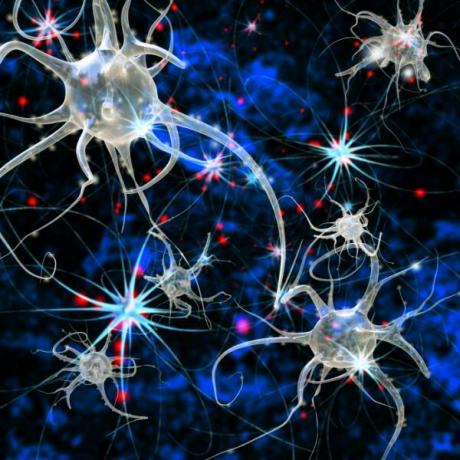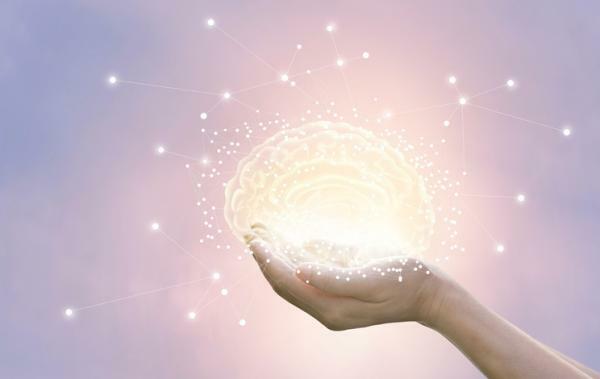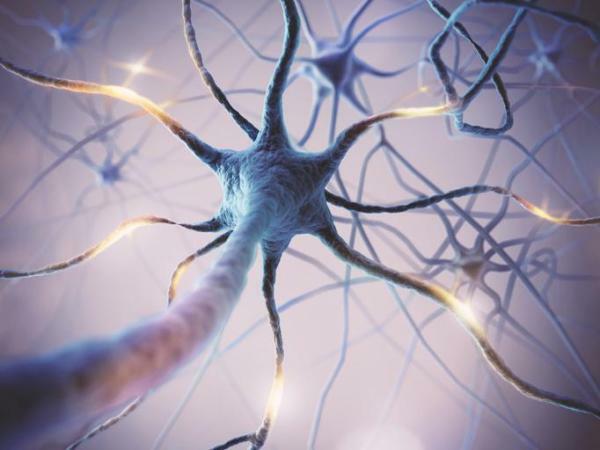
It is clear that most of what we understand as our mental life involves the activity of the nervous system, especially the brain. This nervous system is made up of billions of cells, the simplest of which are nerve cells or neurons. It is estimated that there must be a hundred billion neurons in our nervous system! There is so much to discover and to learn that, in this Psychology-Online article, we will talk about the General Psychology: The Neuron.
Index
- Neurons
- The action potential
- Synapse
- Types of neurons
Neurons
A typical neuron has all the parts that any other cell can have, and a few specialized structures that differentiate it. The main part of the cell is called soma or Cellular body . Contains the core , which contains the genetic material in the form of chromosomes.
Neurons have a large number of extensions called dendrites . They often appear as branches or points extending out of the cell body. Dendrite surfaces are primarily the place where chemical messages are received from other neurons.
There is an extension that is different from all the others, and it is called axon . Although in some neurons it is difficult to distinguish it from dendrites, in others it is easily distinguishable by its length. The function of the axon is to transmit an electrochemical signal to other neurons, sometimes at a considerable distance. In the neurons that make up the nerves that run from the spinal cord to your feet, axons can be up to 1 meter long!
Longer axons are often lined with a layer of myelin, a series of fat cells that envelop the axon many times. That makes the axon look like a sausage-shaped string of beads. They serve a similar function to the insulation of electrical cables.
At the end of the axon is the axon termination , which receives a variety of names such as termination, synaptic button, foot of axon , and others (I don't know why no one has established a consistent term!). It is there that the electrochemical signal that has traveled the length of the axon is converted into a chemical message that travels to the next neuron.
Between the termination of the axon and the dendrite of the next neuron there is a small jump called synapse (or synaptic jump, or synaptic cleft), about which we will discuss a bit. For each neuron, there are between 1,000 and 10,000 synapses.
The action potential.
When chemicals make contact with the surface of the neuron, they change the balance of ions (electronically charged atoms) between the inside and outside of the cell membrane. When this change reaches a threshold level, this effect spreads across the cell membrane to the axon. When it reaches the axon, an action potential is initiated.
The surface of the axon contains hundreds of thousands of tiny mechanisms called sodium bombs . When the charge enters the axon, sodium pumps at the base of the axon cause sodium atoms to enter the axon, changing the electrical balance between in and out. This causes the next sodium pump to do the same, while the previous pumps return the sodium outward, and so on all the way down the axon.
The action potential travels at an average of 2 to 400 kilometers per hour!

The synapse.
When the action potential reaches the termination of the axon, it causes tiny chemical bubbles called vesicles download your content in the synaptic jump. Those chemicals are called neurotransmitters . These navigate through the synaptic jump to the next neuron, where they find special sites on the cell membrane of the next neuron called receivers .
The neurotransmitter acts like a small key, and the receptor site acts like a small lock. When they meet, they open a pathway for ions, which change the balance of ions in and out of the next neuron. And the whole process begins again.
While most neurotransmitters are excitatory - p. Eg they excite the next neuron - there are also inhibitory neurotransmitters. These make it more difficult for excitatory neurotransmitters to work.
Types of neurons.
Although there are many different types of neurons, there are three broad categories based on their function:
1. The sensory neurons they are sensitive to various non-neural stimuli. There are sensory neurons in the skin, muscles, joints, and internal organs that indicate pressure, temperature, and pain. There are more specialized neurons in the nose and tongue that are sensitive to the molecular shapes that we perceive as tastes and smells. Neurons in the inner ear provide us with information about sound, and rods and cones in the retina allow us to see.
2. The motor neurons They are capable of stimulating muscle cells throughout the body, including the muscles of the heart, diaphragm, intestines, bladder, and glands.
3. The interneurons They are the neurons that provide connections between sensory neurons and motor neurons, as well as between themselves. The neurons of the central nervous system, including the brain, are all interneurons.
Most neurons are assembled in "bundles" of one kind or another, often visible to the naked eye. A group of cell bodies of neurons, for example, is called a ganglion or a core. A fiber made of many axons is called a nerve . In the brain and spinal cord, the areas that are made up mostly of axons are called white matter , and it is possible to differentiate tracks or tracts of those axons. Areas that include a large number of cell bodies are called Gray matter .
This article is merely informative, in Psychology-Online we do not have the power to make a diagnosis or recommend a treatment. We invite you to go to a psychologist to treat your particular case.
If you want to read more articles similar to General Psychology: The Neuron, we recommend that you enter our category of Neuropsychology.


